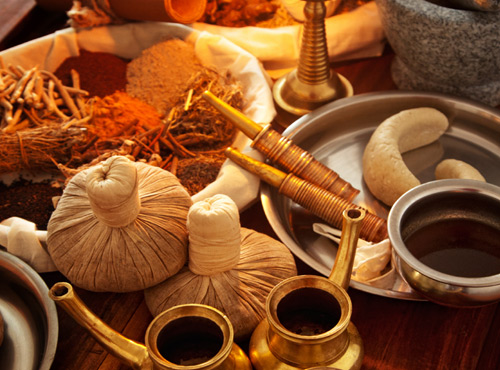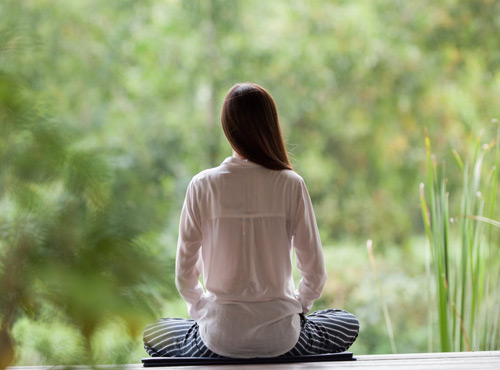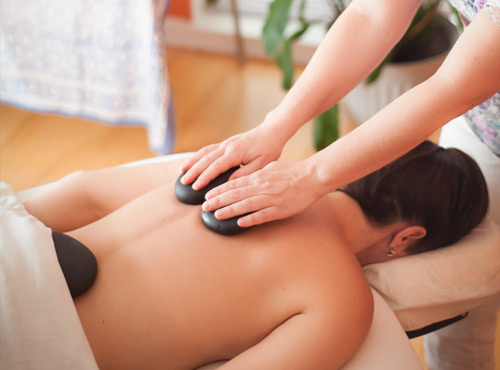Ayurveda is the oldest surviving complete medical system in the world. Derived from its ancient Sanskrit roots - 'ayus' (life) and 'ved' (knowledge) - and offering a rich, comprehensive outlook to a healthy life, its origins go back nearly 5000 years. To when it was expounded and practiced by the same spiritual rishis, who laid the foundations of the Vedic civilisation in India, by organising the fundamentals of life into proper systems
The main source of knowledge in this field therefore remain the Vedas, the divine books of knowledge they propounded, and more specifically the fourth of the series, namely Atharvaveda that dates back to around 1000 BC. Of the few other treatises on Ayurveda that have survived from around the same time, the most famous are Charaka Samhita and the Sushruta Samhita which concentrate on internal medicine and surgery respectively. The Astanga Hridayam is a more concise compilation of earlier texts that was created about a thousand years ago. These between them forming a greater part of the knowledge base on Ayurveda as it is practiced today.
The art of Ayurveda had spread around in the 6th century BC to Tibet, China, Mongolia, Korea and Sri Lanka, carried over by the Buddhist monks travelling to those lands. Although not much of it survives in original form, its effects can be seen in the various new age concepts that have originated from there.
No philosophy has had greater influence on Ayurveda than Sankhaya's philosophy of creation and manifestation. Which professes that behind all creation there is a state of pure existence or awareness, which is beyond time and space, has no beginning or end, and no qualities. Within pure existence, there arises a desire to experience itself, which results in disequilibrium and causes the manifestation of the primordial physical energy. And the two unite to make the "dance of creation" come alive.
Imponderable, indescribable and extremely subtle, this primordial energy - which and all that flows from it existing only in pure existence - is the creative force of all action, a source of form that has qualities. Matter and energy are so closely related that when energy takes form, we tend to think of it in terms of matter only. And much modified, it ultimately leads to the manifestation of our familiar mental and physical worlds.
It also gives rise to cosmic consciousness, which is the universal order that prevades all life. Individual intelligence, as distinct from the everyday intellectual mind, is derived from and is part of this consciousness. It is the inner wisdom, the part of individuality that remains unswayed by the demands of daily life, or by Ahamkara, the sense of `I-ness'.
A Sanskrit word with no exact translation, Ahamkara, is a concept not quite understood by everyone as it is often misleadingly equated to `ego'. Embracing much more than just that, it is in essence that part of 'me' which knows which parts of the universal creation are 'me'. Since 'I' am not separate from the universal consciousness, but 'I' has an identity that differentiates and defines the boundaries of `me'. All creations therefore have Ahamkara, not just human beings.
There arises from Ahamkara a two-fold creation. The first is Satwa, the subjective world, which is able to perceive and manipulate matter. It comprises the subtle body (the mind), the capacity of the five sense organs to hear, feel, see, taste and smell, and for the five organs of action to speak, grasp, move, procreate and excrete. The mind and the subtle organs providing the bridge between the body, the Ahamkara and the inner wisdom, which three together is considered the essential nature of humans.
The second is Tamas, the objective world of the five elements of sound, touch, vision, taste and smell - the five subtle elements that give rise to the dense elements of ether or space, air, fire, water and the earth - from which all matter of the physical world is derived. And it is Rajas, the force or the energy of movement, which brings together parts of these two worlds.
| Dense Element | Subtle Element | Sense Organ | Motor Organ | Function |
|---|---|---|---|---|
| Per Person | Sound | Ears | Vocal Chords | Speaking |
| Air | Touch | Skin | Hands | Grasping |
| Fire | Sight | Eyes | Feet | Moving |
| Water | Taste | Tongue | Genitals | Procreating |
| Earth | Smell | Nose | Anus | Excreting |
It is worth noting that even at the stage of the dense elements the philosophy of creation -which according to Sankaya is now and in the present, without any past and any future - is still dealing with aspects of existence beyond our simple physical realms. The point of contention being that we are the first and foremost spirit experiencing existence. To use Ayurveda in daily life, one has neither to accept nor even understand this philosophy. But it does provide a deeper insight into how Ayurveda works towards betterment of your health.
Ayurveda therefore is not simply a health care system but a form of lifestyle adopted to maintain perfect balance and harmony within the human existence, from the most abstract transcendental values to the most concrete physiological expressions. Based on the premise that life represents an intelligent co-ordination of the Atma (Soul), Mana (Mind), Indriya (Senses) and Sharira (Body). That revolves around the five dense elements that go into the making of the constitution of each individual, called Prakriti. Which in turn is determined by the vital balance of the three physical energies - Vata, Pitta, Kapha and the three mental energies - Satwa, Rajas, Tamas.
The second is Tamas, the objective world of the five elements of sound, touch, vision, taste and smell - the five subtle elements that give rise to the dense elements of ether or space, air, fire, water and the earth - from which all matter of the physical world is derived. And it is Rajas, the force or the energy of movement, which brings together parts of these two worlds.
Ayurveda thus offers a unique blend of science and philosophy that balances the physical, mental, emotional and spiritual components necessary for holistic health.
EVERYDAY AYURVEDA
In order to keep the tridoshas in a state of healthy equlibrium and digestion & metabolism (agni) in proper order, Ayurveda prescribes for each individual a specific daily routine ( dina - day & acharya - behaviour). The various stages to this daily routine, influenced by the specifics of your prakriti, that will enable you to make the most out of your life, are :
Arising
Since our biological clocks are attuned to the rising and setting of the sun, it is obviously better to awake at sunrise in perfect synchronisation to the natural clock. An ideal time to let the body cells soak in the strength of a tempered sun to be charged for the day. Drinking a glass of luke-warm water helps flush out all toxins accumulated overnight in the body.
Natural Urges
The last portion of the night being ruled by vata - involved in the process of elimination - dawn is the best time to eliminate the body's physical waste. Proper elimination also helping remove the kapha that naturally accumulates overnight. Defecation once or twice daily is the best. Preferably not immediately after a meal. But urination then is wise. Examine your eliminations each morning and if you notice any disturbance indicating poor digestion, go on a fast. It will allow the body rest to correct the system before disease sets in. Never suppress the natural physical urges as elimination, hunger, thirst, sleep, sneezing, yawning, vomiting, flatus and ejaculation, for it will lead to discomfort and even disease.
Cleanliness
Thorough washing of the limbs, face, mouth, eyes & nose purifies the bodies sense organs. Best done with a bath in clean water, it should accompany brushing of the teeth (should be repeated after every meal), scraping off a toxicated coating of ama from the tongue, occasional gargling of salt water with a pinch of turmeric to keep gums, mouth & throat healthy, proper cleaning of the nose and the ears and washing the eyes with warm water held in mouth for moments (saliva being very good for the eyes). Keep your hair trimmed, nails filed and wear clean clothes. Feel free to use perfumes in moderation and feel good.
Exercise
Either passive like massage or active like aerobics or both as in yoga postures, regular exercise increases the body's stamina and resistance to disease by facilitating the immune system, clearing all channels, promoting circulation & waste disposal, and destroying fat. Done regularly, it can reduce anxiety but become addictive. Depending on age & body type, kaphas can go for heavy exercises, pittas should do it in moderation and vatasshould perform yoga and not aerobics. Never exert more than half your capacity, during illness, just after a meal and without rhythmic breathing. Swimming, walking and even laughing are excellent options.
Massage
Necessary for every person, a regular self-massage with herbal oils is usually adequate but needs to be supplemented with professional attention occasionally. It makes the skin supple, controls vata by reducing its cold, dry, light, rough & erratic qualities, enhances blood circulation, encourages quicker removal of metabolic wastes and relaxes the body. Follow the normal direction of hair growth, use a little extra oil over the body's vital parts, massage the scalp and head at least weekly and just the soles of your feet if short of time.
Meditation
Deal for disciplining the mind and removing stress & strain, it is best done after a quick bath to cleanse yourself. Critical in satisfying the mind's hunger, when done well it is so nourishing that even the body can survive on less. Control of desire, or mental hunger, is the key to longevity and immortality. Anything can be meditation so long it is sincere and heartfelt. The simplest and healthiest involves the sun and its golden colour is deemed the most nourishing and productive. While this routine acts as a critical shield of defence against the destabilising influences of an external environment, by using selective choice in some of the other factors mentioned below you can easily improve upon the condition of your total health.
Clothing
In shielding from extreme temperatures, it tends to reflect the temperament of the wearer in a society showing growing preponderance of the same. Should always be light & airy, and made of natural fibres as cotton, wool, linen or silk. Always wear clean, and never anyone else's except that of a saint. Since energy is brought into the body through the crown of the head and exits from the soles of the feet - extracting abnormal heat from the system - the polluted energy usually collects in the footwear. So avoid wearing other's footwear, try not to take shoes into the house and walk barefoot whenever possible. And wooden sandals are more healthy than animal skin or rubber shoes.
Employment
Since work consumes at least one-third part of our lives and success or failure in your profession affects self-confidence, self-worth, it is important that the nature of work should match well with your prakriti. Vata people love work that requires sudden bursts of intense energy. But it tends to exhaust them also. So to balance it off, despite their dislike, they should be in routine jobs, slightly repetitive. Need a soothing home and work environment to smooth out their rough edges. They need adequate rest, specially in the afternoons. And should avoid places where the air is exceptionally cool and dry e.g. the freezing cold inside electronics manufacturing outfits or exceptionally dusty fertiliser mills. The ideal jobs must have enough excitement to hold their interest and sufficient routine to avoid imbalances.
Pitta people are very practical, making good administrators but not original thinkers. By nature aggressive and self-promoting, these realists see everything as a contest that has to be won. Insisting on being in the forefront of all activity, they cram as much work as they can, demanding perfect functioning from their bodies all the time. They do not take delays and obstacles to their plans well and must seriously try to be fair to and keep their professional and private lives separate. They should avoid work that is physically irritating or involves heat (as welding or metal casting) and listen more to others. They should ideally have sufficient challenge to keep them occupied without the stress of severe competition. Innate Kapha stability and balance makes them great administrators. They must make a conscious effort bring in change or variety to their otherwise staid and routine lives. And ensure that even if work is not physically active, leisure is. Slow to get going in the morning, competition is good for them although they may find it stressful.
Choice of Pet
Often an extension of their owner's personalities, pets should ideally be chosen so as to have a therapeutic effect on your doshic imbalances. Vatas get along famously with dogs, the canine's loveable, sloppy, open-heartedness reassuring and stabilising their cold, fearful, fickle nature. Some do well with small, furry high- strung animals as guinea pigs that arouse the maternal instincts in the owners. The cat is the Pittas favourite. With strongly held opinions on most subjects, the feline presents continuous challenges, even with its movements. Kaphas in turn prefer birds, the avian's light chirpiness helping offset some of the dosha's natural ponderousness. For some large dogs prove beneficial as the canine encourages them to exercise along with.
Choice of Partner
Ayurvedic wisdom suggests that like types make better mates because of similar mental processes, attitudes and sexual proclivities. Unfortunately, two people of similar dispositions are likely to have the same defects too. Choosing the right partner who will stimulate, inspire you to evolve into better individual thus becomes very important.
Sleep
A state of physical inertia with mental relaxation, sleep promotes proper growth of the self. Night is the natural time to sleep and mid-day catnaps should not be more than 15 minutes long except for the very young, very old, very weak and those intoxicated, diseased, exhausted or traumatised. Avoid having a full meal just before retiring to bed. Sleeping on the right side is the most relaxing and good for yoga. On the left, it is most digestive and increases interest in food, sleep and sex. Sleeping on the back indirectly and on the stomach directly encourages disease. Sleeping with crown of the head facing east and feet into the west promotes the best meditative sleep. Washing the hands, feet & face just before improves sleep. Never sleep in the kitchen and go to bed only to sleep. 6 to 8 hours of daily sleep is essential. The ideal form of sleep is yoga - a state of complete physical inertness with retention of mental alertness & awareness.




